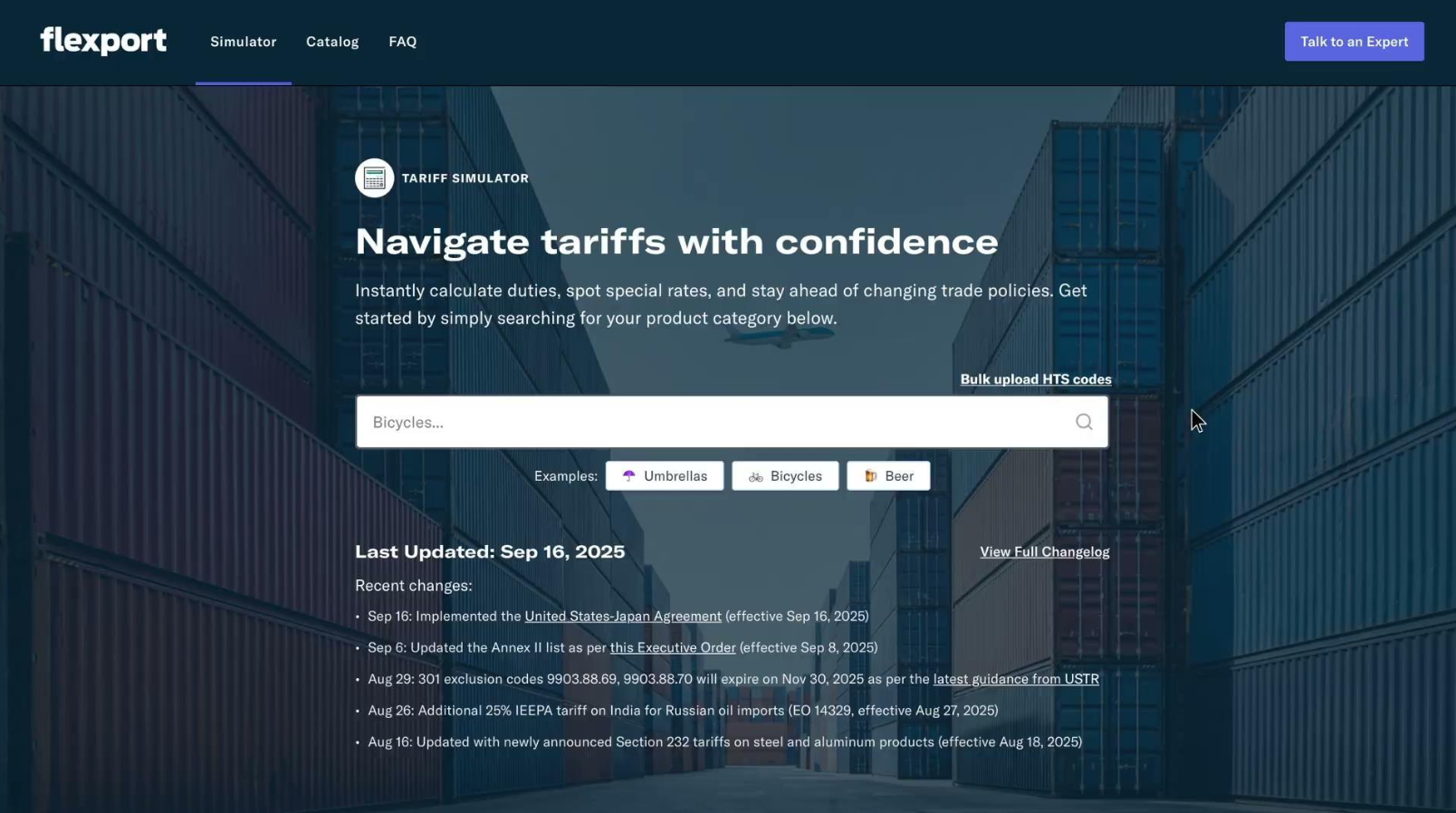
Flexport has introduced a new suite of customs technology designed to help importers manage tariffs, reduce costs and navigate increasingly complex trade environments. The launch, part of the company’s broader Fall 2025 technology rollout, adds to a growing suite of digital tools aimed at improving visibility and efficiency across global supply chains.
The Customs Technology Suite brings together several integrated applications focused on automation, compliance and analytics. It includes a premium version of Flexport’s tariff simulator, which now provides real-time alerts on tariff changes and calculates landing fees in the product catalog.
A customs analytics tool uses data from US Customs and Border Protection to identify compliance risks and potential opportunities for duty recovery, while a compliance audit engine automatically reviews entries rather than relying on manual spot checks.
A conversational AI chatbot allows users to directly query trade data, and improvements to Flexport’s duty refund algorithms are designed to help importers recover more refunds.

“Global business is critical, yet constantly slowed by complexity, transparency and inefficiency,” said Ryan Petersen, founder and CEO of Flexport. “Our goal is to make logistics as simple and reliable as flipping a light switch. With these new technologies, businesses can focus less on tariffs, penalties and hidden costs and more on creating amazing products that drive growth.”
Many importers, especially SMEs, have struggled with sudden tariff changes, inconsistent documentation, and lack of transparency in land cost calculations. By automating some of these processes, Flexport aims to help businesses make more informed sourcing and pricing decisions.
New technology can help users track exposure to duties, avoid costly compliance issues, and better anticipate changes in business policy. Flexport reports that its customers have recovered a total of more than $700 million in refunds and savings through duty refund operations to date, reflecting the demand for greater visibility into customs processes.

Flexport is pushing more towards automation and AI-based decision support tools. Alongside the customs platform, the company has launched other products that warn users about the risks of crime and arrest and offer public rate comparison tools to improve cost transparency.
The goal is to integrate customs, shipping and compliance data into a single platform that reduces friction and delays in international logistics operations.
While the company’s approach is part of the growing role of automation in customs administration, it also highlights the challenges of applying technology in a regulatory environment that varies greatly by region and product type.
Flexport’s latest offering draws attention to the broader industry trend of automation and modernization. As trade policies change and supply chains become more interconnected, importers are looking for systems that can provide faster and more accurate insight into their operations.